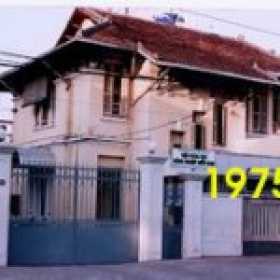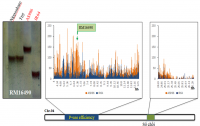|
NGUYEN BINH DUY. 2018. IMPACTS OF GLYPHOSATE AND ITS FORMULATION ON SOIL MICROBIAL FUNCTION. A thesis submitted to Southern Cross University in fulfillment of the requirements for the degree of Doctor of Philosophy. Southern Cross University, AUSTRALIA.
Thứ tư, 07-08-2019 | 08:06:46
|
|
Soil Science Department, the IAS, 121 Nguyen Binh Khiem, HCMC, Vietnam E-MAIL <nguyenbinhduy@yahoo.com> Supervisors: A/Prof. Dr. Terry J. Rose, Adjunct Prof. Dr. Lukas Van Zwieten, Dr. Michael T. Rose, Dr. Dirk Erler
ABSTRACT
The herbicide glyphosate is an important tool for weed management and it is the most widely applied herbicide worldwide. Concerns have been raised that its increasing use negatively impacts on soil biology. The thesis examined the impact of glyphosate and a commercial formulation (RoundupCT®) on soil functions. The influence of glyphosate on soil microbial biomass (SMB) and soil microbial respiration (SMR) was unclear, with inconsistent results across published studies. We hypothesised that differences in rates and formulation of herbicide application, presence or absence of plants, and variability in soil parameters such as pH and organic carbon (OC), may have contributed to the inconsistent results. To unravel the heterogeneity of published effects, a meta-analysis using linear mixed-effect and boosted regression tree models was conducted. The study indicated no impacts of glyphosate on SMB or respiration at field rates, but at higher doses, and soils with lower C and pH, inhibition of SMB was detected.
The literature review also indicated that the specific effects of glyphosate and commercial formulations of glyphosate on soil microbial community function were not fully understood. A number of experimental studies were carried out in the laboratory to investigate the role of soil type, herbicide dose and formulation on SMB, community structure (assessed by substrate induced respiration), and soil functionality. A study was therefore conducted to investigate the effect of increasing doses (0–79 mg kg−1) of glyphosate and the formulation RoundupCT® on substrate induced respiration (SIR) and enzyme activities representing C-, N-, S- and P- cycling in three contrasting agricultural soils, over a 27 d period. Soil characteristics and the form of herbicide (glyphosate vs RoundupCT®) were dominant factors controlling potential effects on soil functionality. The light-textured Tenosol was more responsive to herbicide treatments than either the clay Vertosol or loamy Chromosol. In the Tenosol, there was a significant interaction between dose and herbicide form at 3 d after treatment: application of RoundupCT® at the two highest doses (26 and 79 mg glyphosate kg−1 soil) enhanced SIR of a number of C-substrates, while the highest dose of glyphosate inhibited SIR. RoundupCT® also triggered significantly greater consumption of arabinose, glucose, N-acetylglucosamine and proline in the Tenosol 27 d after application compared to glyphosate alone, but application dose was no longer significant. Effects in both the Chromosol and Vertosol were less clear, with glyphosate increasing SIR of glucose and malic acid in the Chromosol at day 3 only cf. Roundup CT, while SIR of arabinose, glucose and malic acid was stimulated by RoundupCT® in the Vertosol cf. glyphosate. In the Vertosol, glyphosate and RoundupCT® application at 79 mg kg−1 significantly increased respiration of arabinose 3 d after application, and oxalic acid at both time points, compared with the untreated control. Although some minor effects on enzyme activities were observed, they were generally less sensitive than measures of SIR. The exception was a significant reduction of cellulose activity in Vertosol 27 d after treatment with glyphosate (but not RoundupCT®) at rates equal or greater than 2.9 mg kg−1. Overall, effects of glyphosate or RoundupCT® at label rates were minor or periodic. This study demonstrated that the soil type and formulation of the herbicide are important factors when assessing potential impacts of herbicides on soil functions.
Multiple applications of the herbicide glyphosate each year are now common in many agricultural systems worldwide. Although a body of literature exists on the impacts of single label rate or high application rates on soil functionality, a paucity of data exists on the more realistic effect of repeated application to soil. This study investigated the effects of repeated glyphosate (as RoundupCT®) application on substrate-induced respiration (SIR), enzyme activities representing C-, N-, S- and P- cycling, and microbial community structure in three contrasting agricultural soils. The role of soil characteristics was highlighted by this study, with the light-texture Tenosol showing changes to all three measured parameters following RoundupCT® treatment while SIR and functional parameters in the clay Vertosol and loamy Chromosol were unaffected. In the Tenosol, monthly exposure of the soil to label rate doses (2.93 mg kg-1) of RoundupCT® significantly altered patterns of SIR compared to control soil not previously exposed to RoundupCT® by reducing mineralisation of glucose and arabinose. Concomitantly, the Tenosol had significantly lower cellulase activity, but higher phosphomonoesterase activity. None of the soils showed any changes to the total bacterial biomass as assayed by dsDNA, but four members of the phylum Acidobacteria were associated with a decline in cellulose activity in the Tenosol. Impacts on the Tenosol highlight the need to consider reasonable time between field applications to enable degradation of glyphosate to avoid changes to soil function and bacterial diversity in this more susceptible soil. Vertosol and Chromosol, due to their higher clay content, phosphorous buffering index and organic C content were more robust and were not susceptible to field-rate doses of RoundupCT®.
We assessed the effects of pre-exposure of soil to between 0-10 field recommended doses (over 9 months) of RoundupCT® on the mineralisation of phosphonomethyl-14C-glyphosate in a 59 day incubation. The maximum cumulative dose of glyphosate (from 10 applications) was 29.3 mg glyphosate kg-1 soil. To investigate the role of soil type, three contrasting agricultural field soils were used. Across treatments, the mineralisation of 14C-glyphosate varied significantly (P<0.05) amongst the three soils, ranging from 1.5-2.5%, 7-9% and 35-41% total mineralisation after 59 days from Tenosol, Chromosol and Vertosol, respectively. RoundupCT® at the highest cumulative dose primed the Vertosol for increased mineralisation of phosphonomethyl-14C-glyphosate but inhibited mineralisation in the sandy Tenosol (P<0.05). No major effects were observed in the Chromosol. While the rate of mineralisation plateaued in the Vertosol over time, presumably through binding to the high clay content, mineralisation rate increased slightly in the Tenosol over time, as bioavailability of glyphosate is likely to have remained high. We suggest that priming of soils for increased glyphosate degradation by repeated pre-exposure to glyphosate may occur in resilient soils having greater clay and organic C content, while degradation of glyphosate in sandy soils with low organic C may be slowed.
|
|
|
|
[ Tin tức liên quan ]___________________________________________________
|


 Curently online :
Curently online :
 Total visitors :
Total visitors :
